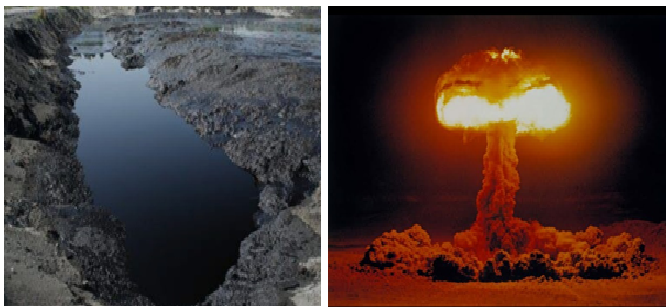
CONFLICT AND CLIMATE CHANGE
ARTICLE BY ABDULHAMID USMAN, IRIMIYA GIRAMA, HAUWA BABA ALKALI AND MSHELIA BIRMA
FOR PEACE-BUILDING AND SDG DEPARTMENTS OF HOPE INTERACTIVE.
Conflict is the result of opposing thoughts, actions or ideas disrupting the status quo. Conflict is seen in everyday life, and is natural, often selfish, and sometimes productive phenomenon. Because it can lead to violence and war in certain situations, the word ‘conflict’ often appears with a negative connotation.
The interplay between conflict and climate change is a complex and multifaceted issue that has garnered increasing attention in recent years. While climate change is primarily driven by greenhouse gas emissions from industrial activities, land use changes, and energy consumption, and other activities by man, conflict can exacerbate the environmental crisis in various ways.
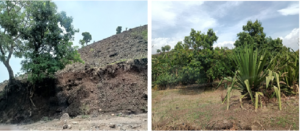 On the other hand Climate change refers to long-term shifts in temperatures and weather patterns. Such shifts can be natural, due to changes in the sun’s activity or large volcanic eruptions. But since the 1800s, human activities have been the main driver of climate change, primarily due to the burning of fossil fuels like coal, oil and gas.
On the other hand Climate change refers to long-term shifts in temperatures and weather patterns. Such shifts can be natural, due to changes in the sun’s activity or large volcanic eruptions. But since the 1800s, human activities have been the main driver of climate change, primarily due to the burning of fossil fuels like coal, oil and gas.
Both climate change and conflict influences each other’s occurrence and further makes our world unbearable to live. Technically speaking, the connection between them is more of a positive feedback mechanism. It is crystal clear that the two entities double crossed each other in a way beyond reasonable doubt.
Climate change does contribute to increased conflict, but this often happens along indirect pathways. It makes the most vulnerable even more vulnerable. We have seen over time that there is no group more vulnerable than those who have had to flee their country due to conflict and are now feeling the effects of a hostile climate. We are also seeing that people who have been displaced by a combination of both conflict and the consequences of climate change and environmental degradation are extremely unlikely to be able to return home.
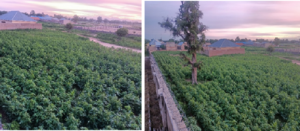
We are seeing across fragile regions increased food insecurity, urbanization (as small farm holdings no-longer remain viable following a sequence of droughts or disasters) and competition over resources – particularly water. When combined with other planetary crises such as land degradation and over exploitation of the environment, climate change can make an already fraught situation untenable. 90 per cent of the world’s refugees originate from countries that are already impacted by the climate emergency and/or have the least capacity to adapt to an increasingly hostile environment. The latter is particularly important; while climate change impacts every single square meter of this earth, it does not impact everyone equally. And unfortunately, it is those states who have often contributed the least to global emissions, which are very much at the forefront of feeling the impacts of the emergency.
A wise man once said, “Greater respect for the rules of war can reduce the harm and risks that conflict-affected communities are exposed to as a result of climate change.”
For example, climate change can drive water scarcity and reduce the availability of arable land. By prohibiting attacks on objects indispensable to the survival of the civilian population, such as agricultural areas and drinking water, IHL protects these resources from additional conflict-related violence.
In Yobe, Borno and Adamawa states of Nigeria which has suffered from insurgency for over a decade, a lot of consequences of such conflict has promoted climate change, this is ranging from the war where the use of bombs, rocket propelled launchers and several forms of heavy explosives were deployed which lead to the destruction of massive trees, large areas of lands which may sometimes be lands being used by people for growing crops, the explosions, which usually lead to carbon emission from the explosives themselves and burning bushes, the animals in these areas being destroyed by the effect of the bombings. Sometimes, forested areas or shrubs are deliberately cut down to avoid insurgents or criminals from hiding and to provide a clear view from a distance.
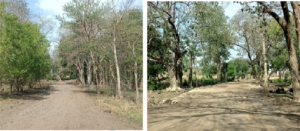 People were equally forced to leave their homelands to other places in search of safety and hence promote high level of migration which later promotes a high level of competition for resources in these new locations that accommodated the migrants.
People were equally forced to leave their homelands to other places in search of safety and hence promote high level of migration which later promotes a high level of competition for resources in these new locations that accommodated the migrants.
Shrinking water bodies have made group of fisher men to clash on fishing rights and dominance in certain parts of the Northeast of Nigeria. Drying up of wells have led to clashes between families of farmers fetching water and herders trying to get for their animals drinking water. Struggle for natural resources like oil, wood (for cooking and construction), economic trees, grass etc has been a major source of conflict in numerous communities around the world.
 In several interactions with community members and Fulani herdsmen via FGD and KII session in researches, and also several dialogues sessions across Yobe and Borno states facilitated by Hope Interactive, the organization was able to get feedback as to the major causes of conflicts among farmers and herders which were all linked to the issues of land and farms. While the Fulani herdsmen claim that farmers do encroach their traveling routes and grazing land; in several cases the farmers deny that but in some other cases the farmers actually accept the fact that the soil in some of the lands are no longer fertile for growing of crops. Some equally cried out on how their farms have been destroyed by erosion and have become gullies or water ways.
In several interactions with community members and Fulani herdsmen via FGD and KII session in researches, and also several dialogues sessions across Yobe and Borno states facilitated by Hope Interactive, the organization was able to get feedback as to the major causes of conflicts among farmers and herders which were all linked to the issues of land and farms. While the Fulani herdsmen claim that farmers do encroach their traveling routes and grazing land; in several cases the farmers deny that but in some other cases the farmers actually accept the fact that the soil in some of the lands are no longer fertile for growing of crops. Some equally cried out on how their farms have been destroyed by erosion and have become gullies or water ways.
In the same vein the Fulani herdsmen lamented that even after harvesting their crops, farmers ensure that the animals are starved because they either gather the chaff and left over of animal feeds on their farms and set it ablaze or engage in an irrigation farming. This frustrates the Fulani herdsmen the more and is one of the interwoven issues that trigger and fuel conflict among the two groups. Though this issue is not new and is not just restricted to northeastern Nigeria, it covers virtually every part of the country, Africa at large as it keep metamorphosing and changing forms.
One of the most visceral images of the environmental cost of conflict was during the first Gulf War, when 700 of Kuwait’s oil fields were set ablaze. The smoke plume above them initially stretched for several miles. A staggering 11 million barrels of crude oil poured into the Persian Gulf, creating a slick nine miles long. Inland, nearly 300 oil lakes formed on the surface of the desert, polluting the soils for decades.
 Provoked settlers in the West bank in Israel have destroyed olive trees that have lived for over 80 years; provoked Palestinians in the west bank have sent incendiary balloons into Israel, setting forests and bushes on fire; Youths protesting in Nigeria have had to burn dozens of car tires to vent or air they grievance or set ablaze government properties. The use of chemical and biological weapons in warfare might have an impact on the ecosystem itself, like white phosphorus, chlorine gas etc. whose effect on plants is specie dependent, concentration dependent and also on the duration of exposure (www.atsdr.cdc.gov) All of these conflict related human activities are not helpful to the climate.
Provoked settlers in the West bank in Israel have destroyed olive trees that have lived for over 80 years; provoked Palestinians in the west bank have sent incendiary balloons into Israel, setting forests and bushes on fire; Youths protesting in Nigeria have had to burn dozens of car tires to vent or air they grievance or set ablaze government properties. The use of chemical and biological weapons in warfare might have an impact on the ecosystem itself, like white phosphorus, chlorine gas etc. whose effect on plants is specie dependent, concentration dependent and also on the duration of exposure (www.atsdr.cdc.gov) All of these conflict related human activities are not helpful to the climate.
While attention is given to climate change in mitigating challenges it imposes on mother earth and the entire human populace; the subject of conflict is a key player and contributor to climate change therefore mitigating conflict is a way of indirectly mitigating climate change.
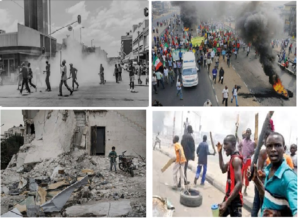
RECOMMENDATIONS
- Peace building initiatives must be holistic to ensure that there is a clear understanding of the nexus between peace building and other existing realities like climate change, economic crises, political instability, social exclusion etc.
- Peace building initiatives must proffer solutions with the lens of the HDP (Humanitarian-development-Peace) nexus. A hybrid of peace-building and development or peace-building and humanitarian interventions have proved to be very effect. This is because climate crises alters nature and the intensity of humanitarian crises.
- We cannot change the climate without a behavioral change. Reversing the negative impact of human activity on climate is a long battle and would require sustained implementation of climate and peace building activities. Donors and IPs are encouraged to design projects that provide a sustained engagement, not short term activities.
- Majority of the struggle on resources that erupted into full blown war happened because there is limited knowledge and engagement on non-violent communication (NVC) and inclusion. Peace building initiatives should fundamentally factor in these components.



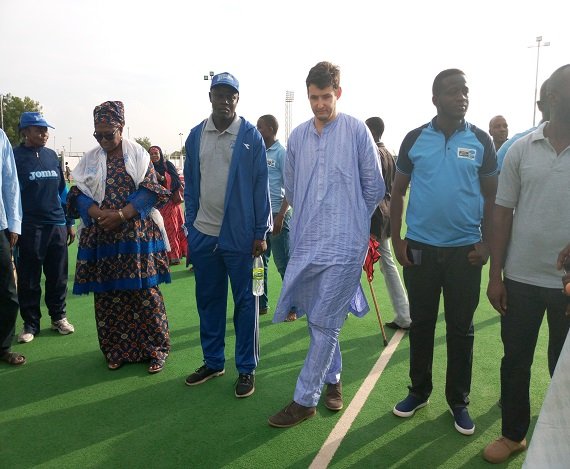
This is an awesome🫢 piece. It painted the true picture of the cutting points between conflict and climate change. Hence recommendations given are measures not to be addressed with laxity. 5 ⭐⭐⭐⭐⭐ to this publication 👍